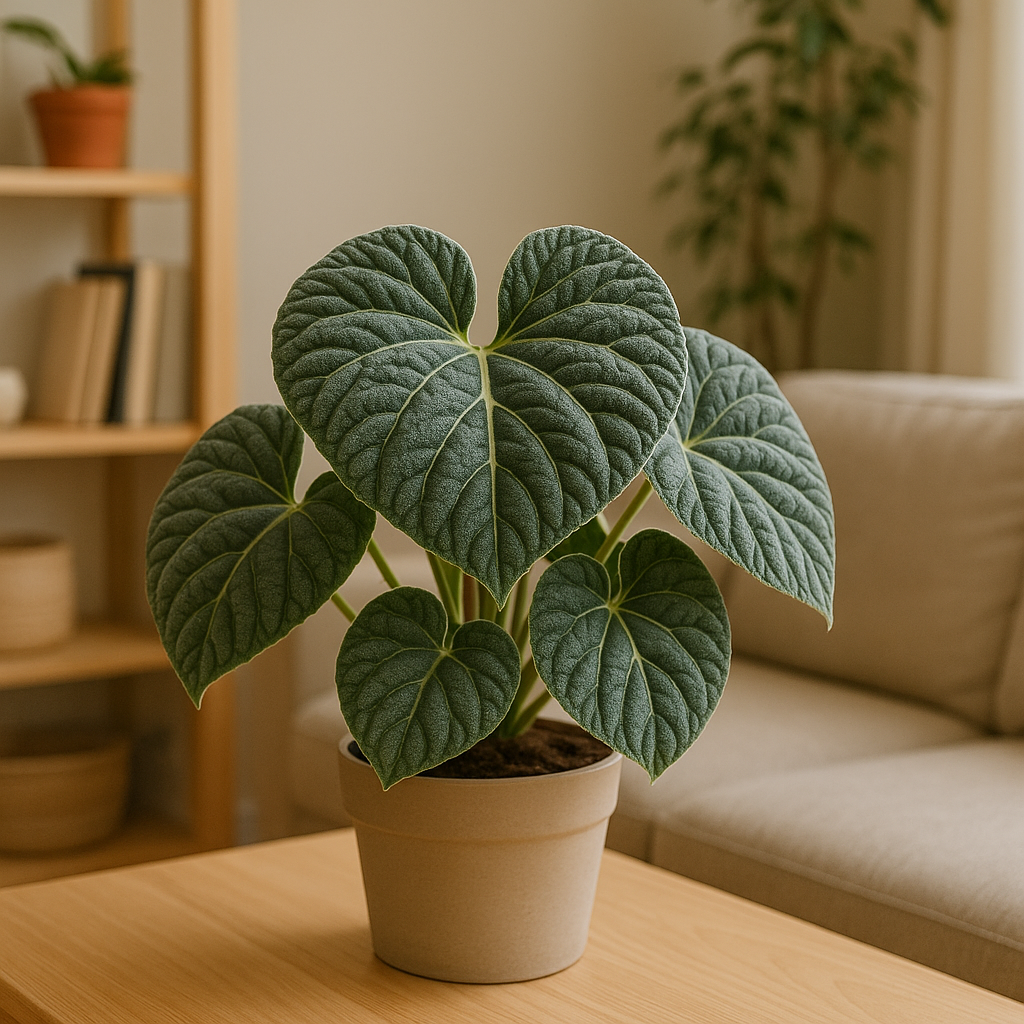Begonia venosa is a rare botanical gem native to Brazil, admired for its distinctive foliage and rugged charm. Though not as widely known as other Begonia species, this plant has gained attention among collectors and plant enthusiasts who seek something exotic, low-maintenance, and visually stunning. In this article, we’ll explore everything about Begonia venosa — its natural habitat, unique features, care requirements, propagation, and why it deserves a place in your home.
Origin and Natural Habitat
Begonia venosa is endemic to Brazil, where it thrives in rocky areas of the Cerrado and Atlantic Forest biomes. It typically grows at higher altitudes, often on well-drained rocky soils with low nutrient availability. These conditions have made the plant highly drought-tolerant and heat-resistant, though it does not handle excessive moisture well.
The name venosa refers to its prominent leaf veins, one of its most eye-catching characteristics. These thick veins aren’t just decorative — they help transport water efficiently through the leaves, which is essential in its dry native environment.
Distinctive Features of Begonia venosa
Belonging to the Begoniaceae family, Begonia venosa stands out among over 1,800 known Begonia species due to its exceptional leaf texture and structure:
- Thick, leathery, velvety leaves with a grayish-green hue
- Pronounced white or silvery veins, giving a dramatic contrast
- Small, delicate white flowers that bloom occasionally in modest clusters
- A compact and spreading growth habit, making it ideal for pots or small spaces
The plant’s rugged elegance makes it perfect for collectors, botanical gardens, or interior designers seeking native and drought-tolerant tropical plants.
How to Grow Begonia venosa
Despite its origins in the wild, Begonia venosa adapts well to indoor cultivation if provided with the right conditions. Here are the main care guidelines:
1. Light Requirements
Begonia venosa thrives in bright, indirect light. In its natural habitat, it receives filtered sunlight through tree canopies or partial shade. Avoid direct afternoon sun, which may scorch its sensitive leaves.
2. Soil and Substrate
Use a well-draining and airy substrate to mimic its rocky natural environment. A good potting mix can include:
- 1 part potting soil
- 1 part perlite or coarse sand
- 1 part orchid bark or charcoal
This helps prevent root rot and promotes healthy growth.
3. Watering
Water the plant moderately, allowing the top layer of soil to dry before watering again. Begonia venosa is sensitive to overwatering and root rot. Always use pots with drainage holes and avoid letting the plant sit in water.
4. Humidity and Airflow
While it tolerates dry air better than many tropical plants, it appreciates moderate humidity and good ventilation. Avoid overly humid or poorly ventilated environments, which may encourage fungal issues.
5. Temperature
Ideal temperatures range between 64°F and 82°F (18°C to 28°C). Protect the plant from cold drafts or temperatures below 50°F (10°C), as it is not frost-tolerant.
Propagation
Begonia venosa can be propagated via stem cuttings or division of clumps. Here’s a simple method:
- Cut a healthy stem with two or more leaves.
- Plant it in moist, well-draining soil.
- Keep the cutting in a bright, humid area until roots form.
Propagation is not only rewarding but also a great way to share this unique species with other plant lovers.
Fun Facts About Begonia venosa
- It is considered a conservation-worthy species, as many natural populations are limited and vulnerable to habitat loss.
- The velvety texture of its leaves adds not only visual but also tactile appeal.
- Landscape designers and conservationists often use it in native restoration gardens and collections focused on rare Brazilian flora.
Why Grow Begonia venosa?
If you’re looking for a resilient, exotic, and visually captivating plant, Begonia venosa is a top contender. Its unique texture, structure, and adaptability make it an excellent choice for indoor collections, shaded patios, or botanical displays.
Growing native plants like Begonia venosa also helps raise awareness about Brazil’s biodiversity and supports the preservation of its unique flora. Whether you’re an experienced collector or a beginner, this begonia is sure to be a conversation starter and a joy to grow.

Add a Touch of Nature with Der Rose Mini Artificial Plants
Enhance your home or office with the charm of lifelike greenery — no watering or maintenance required! Perfect for desks, shelves, bathrooms, or farmhouse-style decor.
- Set of 4 mini artificial potted plants
- Realistic design for a fresh, natural look
- Ideal for home, office, or gift giving
Discover the Majestic Jequitibá-Rosa
Meet the Jequitibá-Rosa, one of the tallest and most iconic trees of the Atlantic Forest. A true natural monument and guardian of biodiversity.
- Learn about its impressive size and longevity
- Understand its role in the Atlantic Forest ecosystem
- Discover its cultural and historical importance

